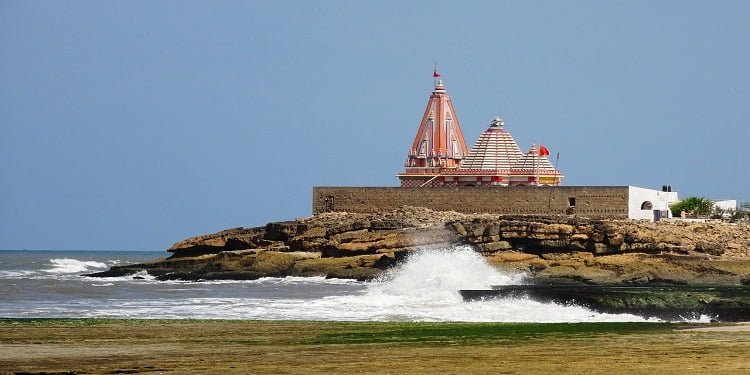The Somnath temple, also known as Deo Patan, is a revered Hindu temple situated in Prabhas Patan, Veraval, Gujarat, India. It holds immense significance for Hindus and is considered the first among the twelve jyotirlinga shrines dedicated to Lord Shiva. The temple’s origins are shrouded in mystery, with estimates varying between the early centuries of the 1st millennium and the 9th century CE.
While the ancient Sanskrit texts of Hinduism do not mention the temple as Somnath, it is referred to as “Prabhasa-Pattana” (Prabhas Patan), a sacred pilgrimage site where the temple stands. The Mahabharata and the Bhagavata Purana mention Prabhasa as a tirtha (pilgrimage site) located on the coastline of Saurashtra.
Throughout history, the Somnath temple has faced multiple instances of destruction by various Muslim invaders and rulers. Notably, Mahmud Ghazni launched an attack on the temple in the 11th century. Despite these challenges, the temple has always risen from the ashes, rebuilt by devoted Hindus.
During the late 19th and early 20th centuries, historians and archaeologists of the colonial era actively studied the Somnath temple. Its ruins showcased a historic Hindu temple that had been converted into an Islamic mosque. However, after India gained independence, the ruins were demolished, and the present-day Somnath temple was reconstructed in the Māru-Gurjara style of Hindu temple architecture.
The reconstruction of the Somnath temple began under the guidance of Vallabhbhai Patel, the first Deputy Prime Minister of India. After receiving approval for reconstruction from Mahatma Gandhi, the temple was restored to its former glory. The project was completed in May 1951, following the death of Mahatma Gandhi.
The Somnath temple stands as a testament to the unwavering faith and resilience of the Indian people. It is a symbol of the rich cultural heritage and spiritual traditions of the country. The temple’s architecture showcases intricate carvings and exquisite craftsmanship, leaving visitors in awe of its grandeur.
Every year, millions of devotees from all over the world flock to the Somnath temple to seek blessings and pay homage to Lord Shiva. The temple’s serene surroundings and the rhythmic chants of prayers create an atmosphere of divine tranquility.
Visitors to the Somnath temple can also explore the nearby attractions, such as the Triveni Sangam, where the rivers Hiran, Kapila, and Saraswati meet. This sacred confluence is believed to possess immense spiritual energy.
The Somnath temple also hosts various festivals and religious ceremonies throughout the year. The most significant festival celebrated here is Mahashivratri, dedicated to Lord Shiva. During this time, the temple is adorned with vibrant decorations, and devotees offer prayers and perform traditional rituals.
As you embark on your spiritual journey to the Somnath temple, remember to respect the traditions and customs of the place. Dress modestly and maintain a peaceful demeanor while inside the temple premises. Capture the essence of this sacred site through your heart and soul, allowing its divine energy to touch your being.
The Somnath temple is not just a place of worship; it is a testament to the indomitable spirit of the Indian people and their unwavering devotion to their gods. It stands as a beacon of hope and inspiration, inviting all to experience the divine presence of Lord Shiva.

























